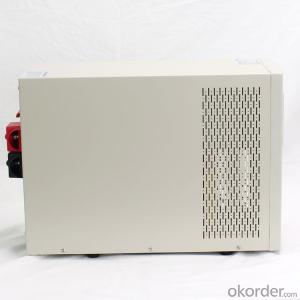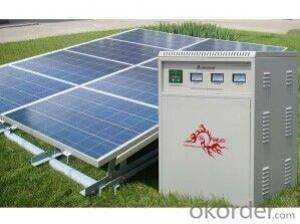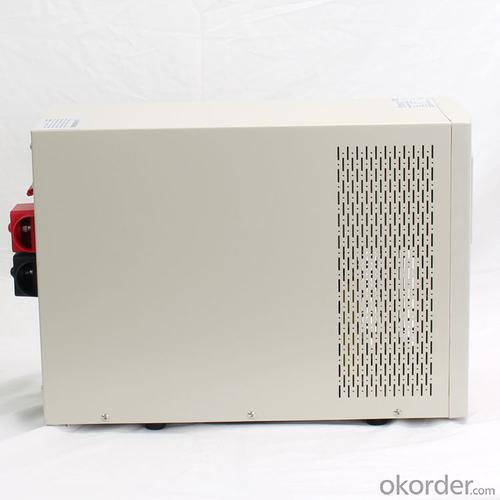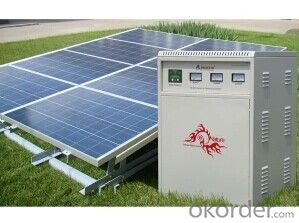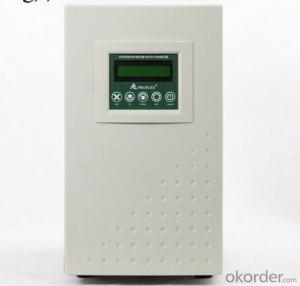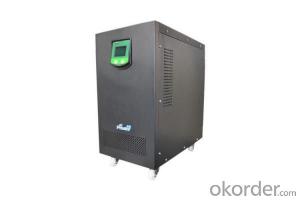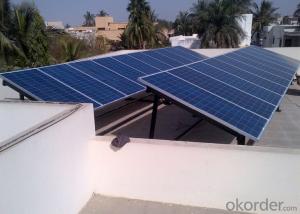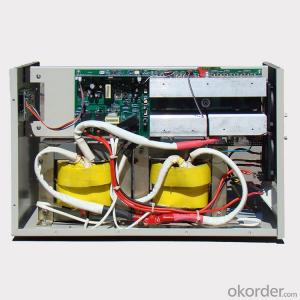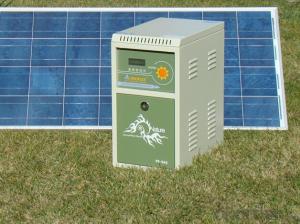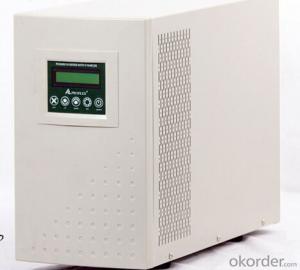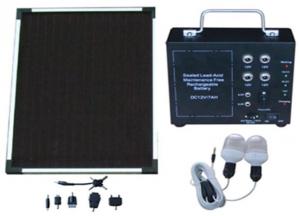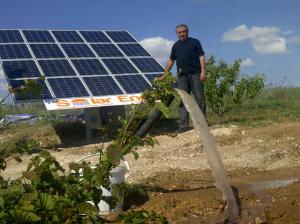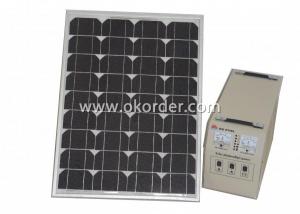Solar Energy Systems Fort Pierce - Off Grid Solar Power System PR-SAS1500 with Battery Tank 1200W
- Loading Port:
- Tianjin
- Payment Terms:
- TT OR LC
- Min Order Qty:
- 10 pc
- Supply Capability:
- 10000 pc/month
OKorder Service Pledge
OKorder Financial Service
You Might Also Like
Specification
Specifications
1.Supply 2 work modes: to save electricity bill or to supply long time power backup.
2. Supply battery tank,high integrated.
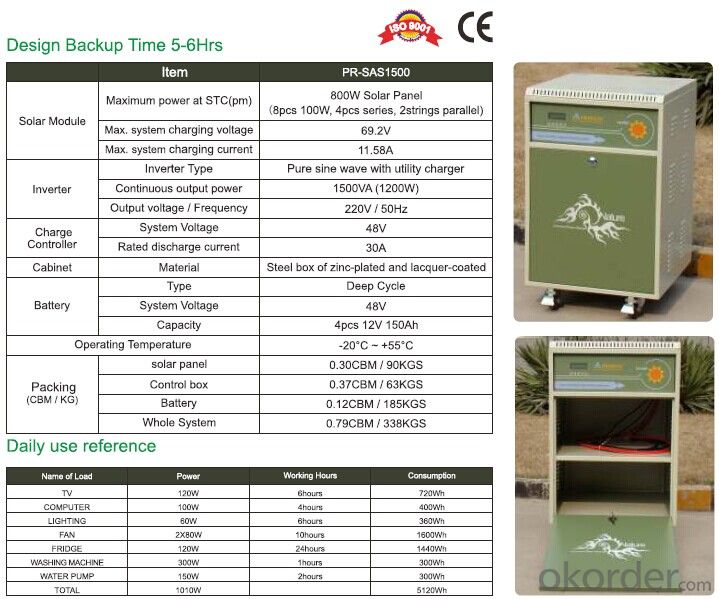

AC solar power system consists of solar batteries, solar controller, battery, inverter components.
Used to solve rural or remote areas without electricity, such as highland, island, pastoral, villas, border posts and other military and civilian life electricity.
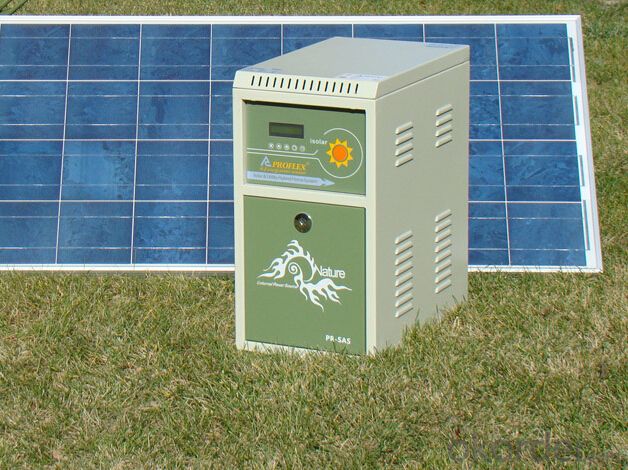
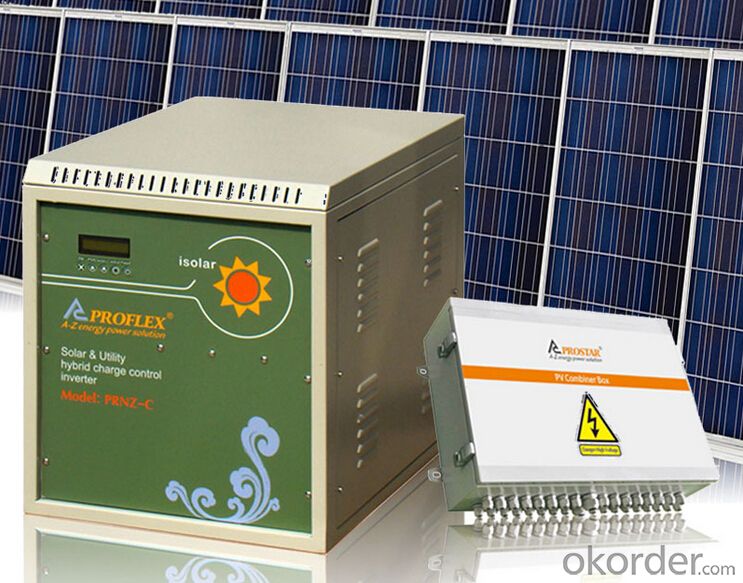
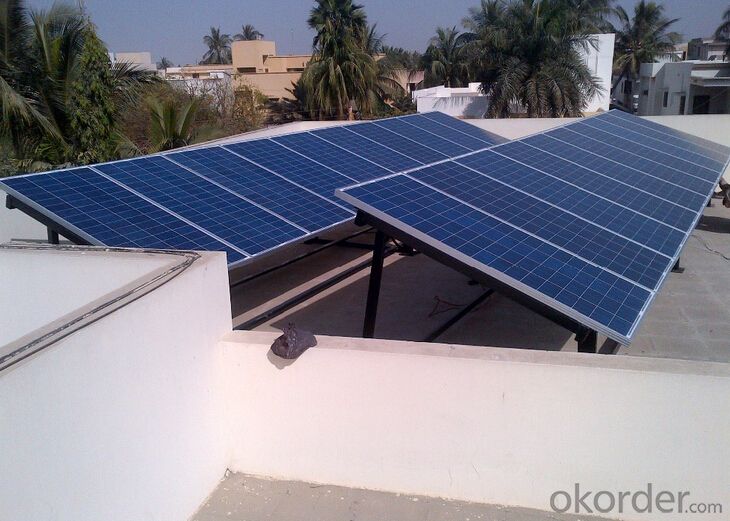
Warranty
CNBM Solar panel provides one of the most comprehensive module warranties in the industry:
· 10 years for product defects in materials and workmanship
· First 12 years for 90% of warranted minimum power
· Remaining 25 years for 80% of warranted minimum power
FAQ
l Where can I buy your products?
You could find our products from dealers or contact our sales team directly. We will provide you with detailed services.
l How to contact us?
Contact details can be found from website www.okorder.com to contact us. We look forward to providing you with professional services.
l What is the application field of your products?
They can be used in the small photovoltaic (PV) grid power generation systems of family units as well as the commercial photovoltaic system such as BIPV, BAPV and etc.
l What kinds of modules do your inventers support?
Our inventers support most of mainstream components and modules in the market. Should you require more details, please do not hesitate to contact our technical personnel.


- Q: Can solar energy systems be used for powering electric vehicle solar charging stations at highways?
- Yes, solar energy systems can certainly be used to power electric vehicle (EV) solar charging stations at highways. Solar power is a clean and renewable energy source that can be harnessed through photovoltaic (PV) panels. These panels convert sunlight into electricity, which can then be used to charge EVs. Highways are often exposed to ample sunlight, making them ideal locations for solar charging stations. By utilizing solar energy, these charging stations can operate off-grid, reducing dependence on traditional power sources and minimizing environmental impact. Additionally, solar charging stations can be installed along highways without the need for extensive infrastructure development, as they do not require connection to the electrical grid. Solar-powered EV charging stations offer several benefits. First, they provide a sustainable and carbon-free method of charging EVs, helping to reduce greenhouse gas emissions and combat climate change. Second, they contribute to the development of a decentralized energy system, as they are independent of the electrical grid. This decentralization can enhance energy security and resilience, as well as increase the overall reliability of the charging infrastructure. Moreover, solar charging stations can have economic advantages. As the cost of solar panels continues to decrease and the efficiency of PV technology improves, the installation and maintenance costs of solar charging stations are becoming increasingly competitive with traditional charging infrastructure. Furthermore, solar charging stations can generate additional revenue through excess energy production, as any surplus electricity can be sold back to the grid. In conclusion, solar energy systems are a viable and sustainable solution for powering electric vehicle solar charging stations at highways. They offer environmental benefits, promote energy independence, and can contribute to cost savings. As the adoption of EVs continues to grow, the integration of solar energy into the charging infrastructure will play a crucial role in creating a greener and more sustainable transportation system.
- Q: How do solar energy systems impact energy storage technologies?
- Solar energy systems have a significant impact on energy storage technologies by providing a clean and renewable source of electricity. These systems generate electricity during the day when the sun is shining, but often produce more energy than needed. Energy storage technologies allow excess energy to be stored and used during periods of low or no solar generation, ensuring a constant and reliable power supply. This integration of solar energy systems with energy storage technologies promotes grid stability, reduces reliance on fossil fuels, and accelerates the transition towards a sustainable energy future.
- Q: Can solar energy systems be used for heating water?
- Yes, solar energy systems can be used for heating water. Solar thermal systems, which use the sun's energy to heat water, are commonly used for domestic hot water systems and swimming pools. These systems consist of solar collectors that absorb sunlight and transfer the heat to water, providing an eco-friendly and cost-effective solution for heating water.
- Q: Can solar energy systems be used in indoor farming or greenhouse applications?
- Yes, solar energy systems can be used in indoor farming or greenhouse applications. Solar panels can be installed on the rooftops of greenhouses or indoor farming facilities to generate electricity, which can then be used to power various operations such as lighting, ventilation, and irrigation systems. This sustainable approach can help reduce energy costs and greenhouse gas emissions while providing a clean and renewable source of power for indoor farming.
- Q: What are the advantages of using solar energy?
- There are several advantages of using solar energy. Firstly, it is a renewable source of energy, meaning that it can be continuously replenished and will never run out. This makes it a sustainable and environmentally friendly option. Secondly, solar energy helps to reduce greenhouse gas emissions and combat climate change, as it does not produce any harmful pollutants during operation. Additionally, solar energy systems are relatively low-maintenance and have long lifespans, resulting in reduced operational costs. Moreover, solar energy can be harnessed in remote areas where traditional electricity sources are not accessible, providing power to underserved communities. Lastly, installing solar panels on residential or commercial buildings can lead to significant savings on electricity bills. Overall, the advantages of using solar energy include sustainability, environmental benefits, cost savings, and increased energy accessibility.
- Q: Are there any fire safety concerns associated with solar energy systems?
- Yes, there are fire safety concerns associated with solar energy systems. While solar panels themselves do not generally cause fires, issues can arise with the electrical components of the system, such as faulty wiring, improper installation, or inadequate maintenance. Additionally, firefighters may face challenges in fighting fires involving solar panels due to the risk of electrocution and the inability to easily disconnect the system from the electrical grid. Proper installation, regular inspections, and adherence to safety guidelines can help mitigate these concerns.
- Q: How does a solar energy system connect to the electrical grid?
- Through the process of net metering, a solar energy system is able to connect to the electrical grid. Net metering grants credits to the owners of solar energy systems for the surplus electricity they produce and transmit back to the grid. The sunlight is converted into direct current (DC) electricity by the solar panels in the solar energy system. This DC electricity is then transformed into alternating current (AC) electricity by an inverter, making it compatible with the electrical grid. The AC electricity is subsequently directed to the primary electrical panel of the building or residence, where it can be utilized to power electrical appliances and devices within the premises. In the event that the solar energy system generates more electricity than is required at a given time, the excess electricity is sent back to the grid through a meter that measures electricity flow in both directions. This bidirectional meter records the electricity consumed from the grid and the excess electricity returned to the grid. The surplus electricity is credited to the account of the solar energy system owner, resulting in the meter effectively spinning backwards. These credits can be used to offset the electricity consumed from the grid during periods when the solar panels are unable to generate sufficient electricity, such as during nighttime or on cloudy days. By connecting to the electrical grid, a solar energy system secures a dependable and uninterrupted supply of electricity. Additionally, it allows the system owner to reap financial benefits by reducing their electricity bills and potentially earning income from the excess electricity sent back to the grid.
- Q: Can solar energy systems be used for powering agricultural drying or processing operations?
- Yes, solar energy systems can definitely be used for powering agricultural drying or processing operations. Solar energy is a clean and renewable source of power that can be harnessed and utilized to meet the energy needs of various agricultural activities. Solar drying systems can be employed for drying crops, grains, fruits, vegetables, and other agricultural produce. These systems use solar radiation to generate heat, which is then used to dry the agricultural products. Solar dryers are cost-effective, energy-efficient, and have lower operational costs compared to traditional drying methods. They can be particularly useful in regions with abundant sunlight and limited access to electricity. Solar energy can also be used to power various processing operations in agriculture. Solar-powered mills, crushers, pumps, and other machinery can be used for tasks such as milling grains, crushing fruits, or pumping water for irrigation. By utilizing solar energy, farmers can reduce their dependence on fossil fuels and electricity from the grid, leading to cost savings and a more sustainable farming practice. Furthermore, solar energy systems can be combined with energy storage solutions, such as batteries, to ensure a continuous power supply even during periods of low sunlight or at night. This allows farmers to have reliable access to energy for their drying or processing operations throughout the day. Overall, solar energy systems offer a viable and environmentally friendly solution for powering agricultural drying or processing operations. They can contribute to reducing greenhouse gas emissions, decreasing reliance on fossil fuels, and promoting sustainable farming practices.
- Q: Can solar energy systems be used in areas with high levels of saltwater exposure?
- Yes, solar energy systems can be used in areas with high levels of saltwater exposure. However, it is important to use materials and components that are specifically designed to withstand the corrosive effects of saltwater. This can include using corrosion-resistant coatings on solar panels, using stainless steel or marine-grade aluminum for mounting structures, and implementing proper maintenance and cleaning procedures to minimize the impact of salt buildup on the system.
- Q: How do solar energy systems impact the transportation sector?
- Solar energy systems can have a significant impact on the transportation sector by reducing reliance on fossil fuels. Solar-powered electric vehicles (EVs) offer a sustainable and renewable alternative to traditional gasoline-powered cars, reducing greenhouse gas emissions and air pollution. Additionally, solar energy can be used to power charging stations for EVs, making them more accessible and convenient for users. This shift toward solar energy in transportation promotes a cleaner and more sustainable future.
Send your message to us
Solar Energy Systems Fort Pierce - Off Grid Solar Power System PR-SAS1500 with Battery Tank 1200W
- Loading Port:
- Tianjin
- Payment Terms:
- TT OR LC
- Min Order Qty:
- 10 pc
- Supply Capability:
- 10000 pc/month
OKorder Service Pledge
OKorder Financial Service
Similar products
Hot products
Hot Searches
Related keywords
